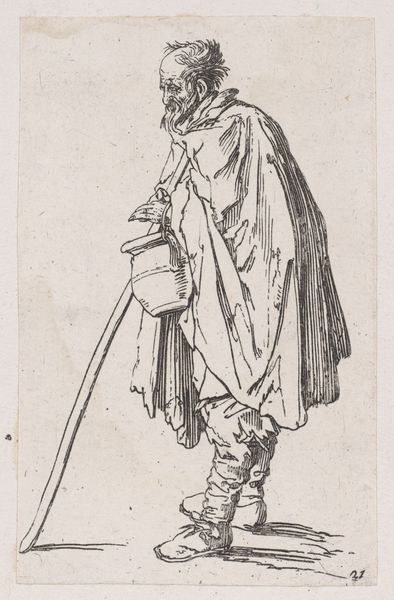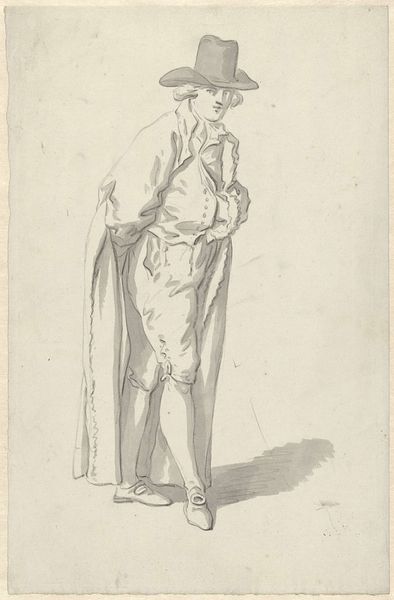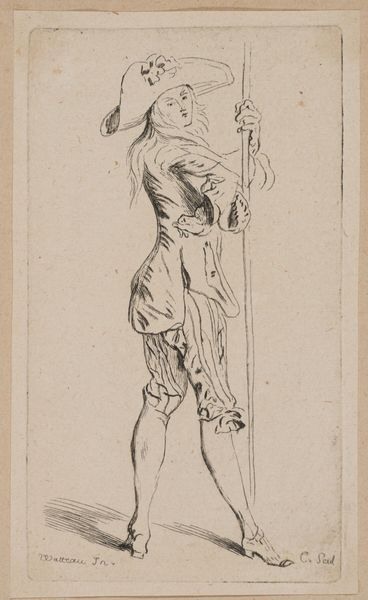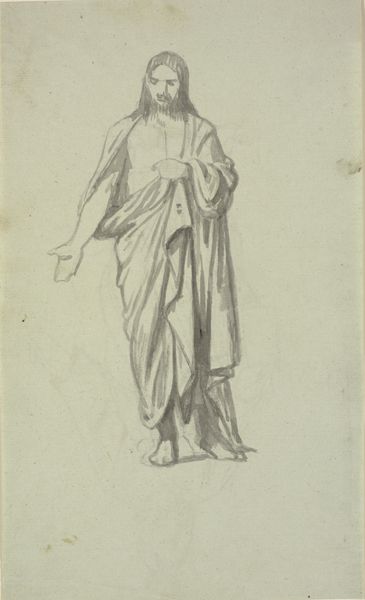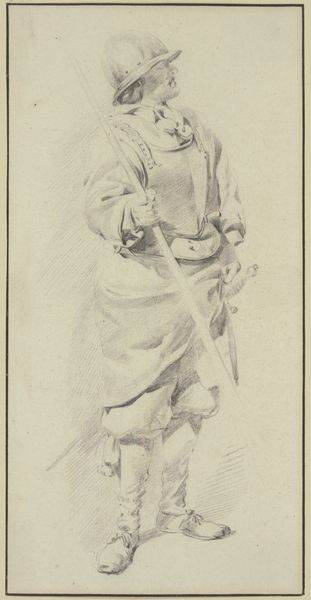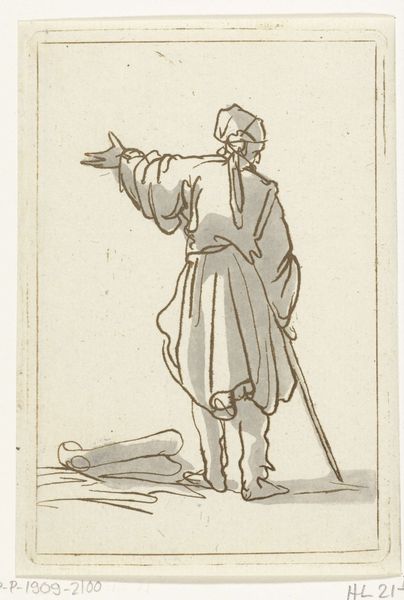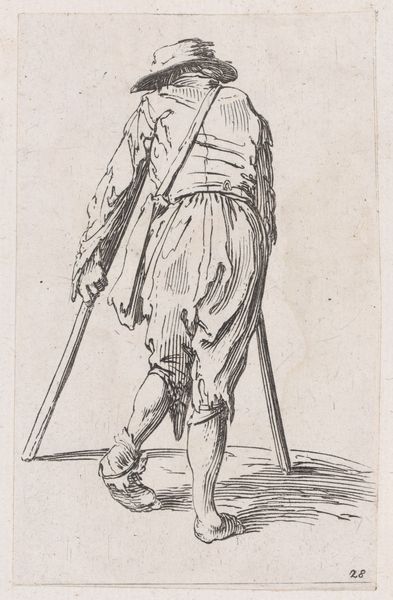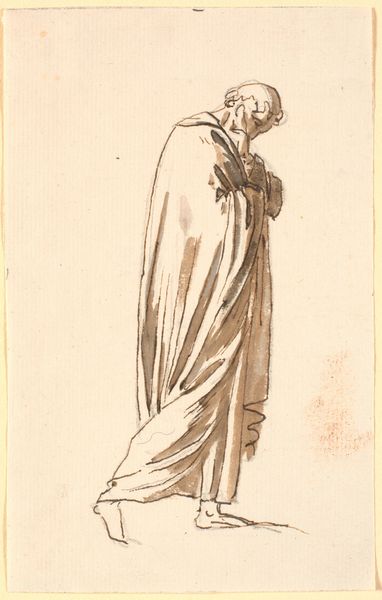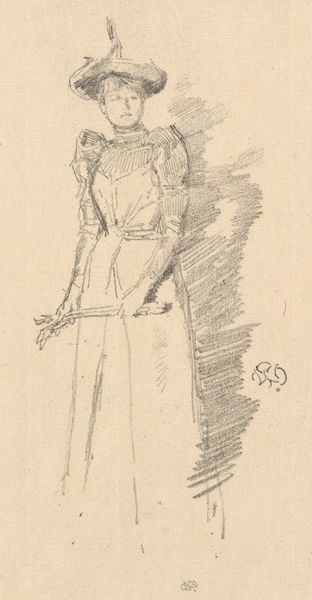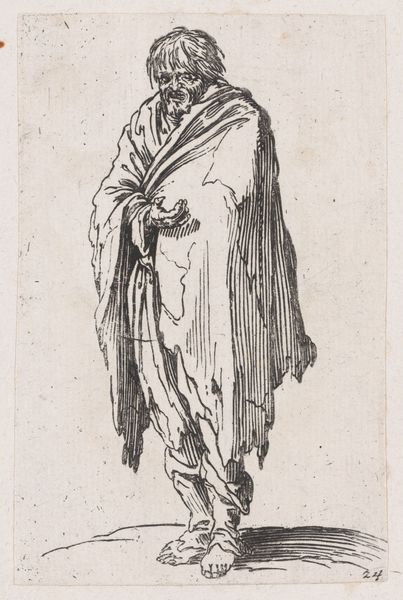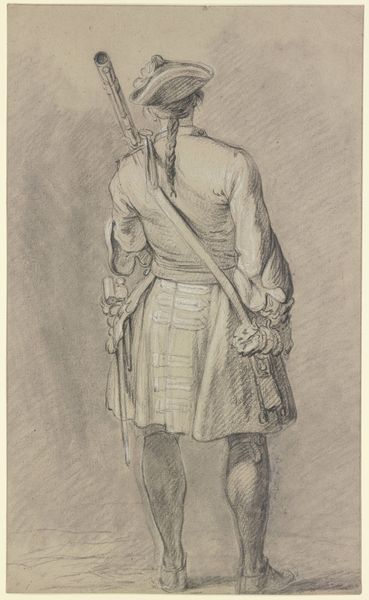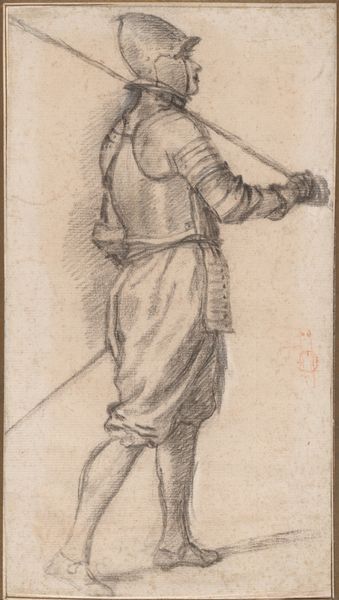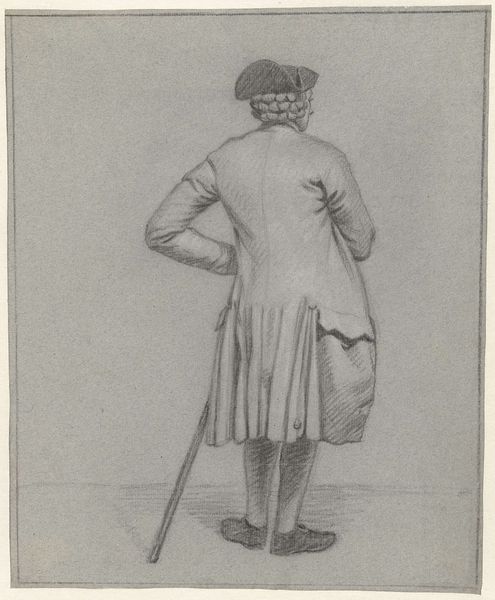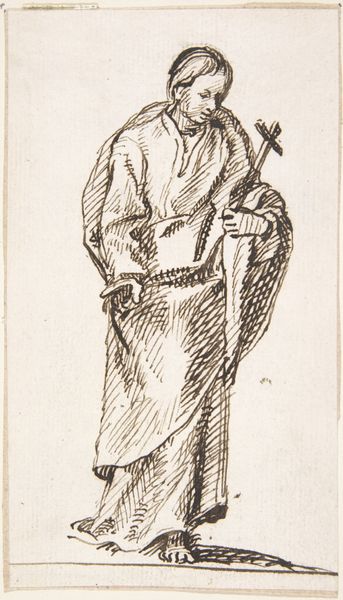
drawing, pencil
#
drawing
#
imaginative character sketch
#
neoclacissism
#
light pencil work
#
caricature
#
caricature
#
cartoon sketch
#
personal sketchbook
#
idea generation sketch
#
pencil
#
sketchbook drawing
#
cartoon style
#
cartoon carciture
#
sketchbook art
Dimensions: height 426 mm, width 280 mm
Copyright: Rijks Museum: Open Domain
Editor: So, here we have a drawing called "Standing Figure in a Long Coat and Hat with a Sword, Facing Right," made in 1797 by Johannes Ziesenis, using pencil. It's got a real… playful energy to it. The figure’s almost a caricature. What can you tell me about it? Curator: Well, what strikes me is how this drawing exists in a very interesting cultural moment. 1797, late 18th century, Neoclassicism is the dominant style, drawing from the rationalism of the Enlightenment. Yet, here's Ziesenis creating something almost… anti-establishment, even though it's technically masterful. It makes you wonder, what was the purpose of art like this during that time? Who was its audience, and what role did it play? Editor: Anti-establishment? Because it's a caricature? How does that fit into what museums value or exhibit? Curator: Exactly. It's a visual satire. The exaggerated features and flamboyant attire hint at social commentary. Remember, museums and galleries often reflect and reinforce prevailing social norms, yet they also exhibit counter-narratives. This work might critique the excesses or affectations of the upper classes, poking fun at societal norms within the safe space of the private collection and, now, a public institution. Do you think that social critique through caricature has power to shape public opinion? Editor: That's fascinating to think about. I hadn't really considered the social commentary aspect. Now I’m curious, how would contemporaries react to it, versus how we view it now? Curator: That is key! Consider, how have political cartoons changed across the centuries, or how are they framed today? And more importantly, who gets to decide whose voice matters? Editor: This drawing definitely gave me a lot to think about concerning the interplay between art, social critique, and the spaces where we encounter art. Curator: Precisely. It showcases that art doesn’t exist in a vacuum; it is a social practice, constantly shaping and being shaped by the society it reflects.
Comments
No comments
Be the first to comment and join the conversation on the ultimate creative platform.
